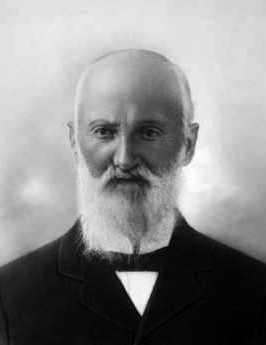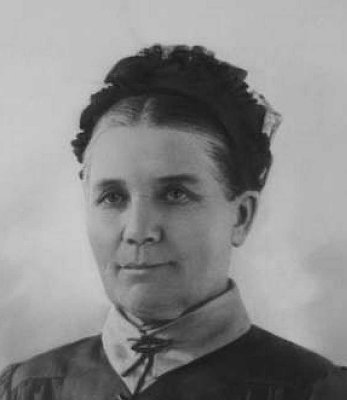[Editor's Note: much of the material on Johannes' life found here is taken directly from the English translation of his 1868-9 pastoral reports found in Rev. Dieter Lilje's e-book Lilje ... 140 Years in South Africa.]
The coastal strip near present-day Port Shepstone was a virtual no-man's land of dense
tropical vegetation until 1856 when the British incorporated it into Natal. In 1866, it was
organized as Alfred County (also called Alfredia). The Hermannsburg Missionary Society established
a mission near the coast called Marburg in 1868, under the direction of missionary Peter Stoppel.
He was initially assisted by a Swedish missionary named Carl Ludwig Flygare, who was assigned there to
earn the Zulu language while they ministered to the Amabaia people. In the 1870s German settlers were
also encouraged by the British authorities to settle in the area. Click here to see a 1904 map
of Alfred County: The new mission station at Marburg was the initial field assignment of Johannes Lilje a few months after
he arrived in Natal in December of 1867. Initially his goals were to use his carpentry and construction
skills to help build the mission station, and to learn the Zulu language. He reported that they had
completed an 11-room house that was 39'x33' and that the Stoppel's had already moved in. This, despite
an early rainy season that had ruined 5-6,000 mud bricks, all of which needed to be made again.
Pastor Flygare moved on from Marburg and established a mission station at Engome as a result of an accident.
His wagons caught fire returning from a trip to Durban. He was taken in and helped by a local sugar mill
owner. That man was so impressed by the evening devotions Flygare conducted for his Zulu workers that he
asked him to establish a mission station there. The mission superintendent OKed the plan if a nearby
Anglican missionary had no objections and if Johannes Lilje was willing to help him establish the mission.
The Engome Mission Station was established, but with another young pastor assisting.
Johannes Lilje stayed on assisting Stoppel at Marburg. Apparently his Zulu language studies went well because
"Since Easter (1869) I have been blessed and been found worthy to preach peace and salvation to these
unfortunate people -- i.e. Br. Stoppel and I take turns preaching." The second mission station in Alfredia
was established in 1870 at nearby Elim by Heinrich Leisenberg. Lilje assisted with the construction of
this station until Johann Karl Rössler became available to assist there. During these early years, Johannes
Lilje's desire to establish a Mission Station of his own grew steadily.
Superintendent Hohls in mid-1871 approved a plan for Lilje to establish a third station in Alfredia, but asked
him to postpone it due to lack of funds ... the missionary's salaries were "reduced to a minimum, so we
could barely make ends meet." The next year, after salaries were increased, "I moved 30 miles to the West of
Stoppel's station ... with the intention of establishing a station there." There were issues with the authorities
about the legality and location of the new station. Letters went back-and-forth. Finally, on his first wedding
anniversary (see "Finding a Wife" in next column), Lilje received the bad news from the superintendent that "we
would not get a third station unless I could do something by my own means."
In January 1873, Lilje reported "After talking to people and asking God for
his help, I bought a piece of land -- 100 acres in size. Mr. Leisenberg was kind enough to lend me the money.
30 pounds Sterling at 7%. So far everything is in order. The land has been measured out, bought and paid for. We
are naming the station Ebenezer (1 Samuel 7:12: Stone of help), because of the way the Lord helped us with the
various obstacles and troubles." And so, with a new wife and an even newer Mission Station, the next phase in
Johannes Lilje's pastorate began.

The Natal missionaries, like all Lutheran pastors, were encouraged to take wives and
have children, presenting a model of Christian family life for their congregation. When Johannes
went to Natal in late 1867, he was apparently engaged to marry a girl from his hometown of Gerdau.
We don't know her name. She had agreed to follow him to Africa once he was established there. In a
November 1868 letter to the Mission Director in Hermannsburg, Johannes noted that in correspondence
she had said "that she was not in a position to follow me and that I should not wait for her to get
into the right frame of mind again."
Apparently another woman, named Klingenberg, had offered herself in marriage to Johannes via a letter.
Johannes had put her off while he "clarified matters with his previous fianceé." He later found she had
also offered herself to be the wife of a colonist. So he decided not to pursue her further, lest that
colonist would "think I have taken his bride away from him." But, Johannes then noted "I am quite well,
except that my fianceé problems have caused me much grief but the Lord has always given me the strength
to carry on."
In the next year, Johannes had almost come to the conclusion "that I should not seek to have a relationship
with any girl again." But, after a stay in Pastor Flygare's mission station, "I felt very lonely." Soon
he had a dream about a girl, named Schulze, who was a maid in a Bekedorf household he had worked in as a
youth. She was now a deaconess in Hannover. He wrote a letter to her offering marriage, but sent it to the
Mission Director asking him "to consider the matter and judge whether my decision to write to this girl
is a sensible one." We are unsure whether the letter was forwarded to her. If it was, she apparently
declined the offer. Therefore, we know of three marriageable girls who did not become Johannes' bride.
The next step we can only surmise. We believe that Johannes somehow came in contact with the Rencken
family. Frederick Rencken and his wife Gesche Beckröge were Hermannsburg colonists who came to Natal
in 1866. When the colonist program was ended in 1869, they bought a farm and settled in Wartburg, a
German settlement northeast of Pietermaritzburg. Somehow Johannes got the message that Gesche had a
marriageable sister who might be open to coming to Africa. Anna Reibeling said her grandmother told her
she "had received a letter and a photo of a prospective husband. ... She agreed to marry him, but on arrival she found
he had very short legs which were not apparent in the seated photo." In any case, Anna Caroline Beckröge married
Johannes Lilje in 1871 as promised!
There was a bridge in Neu Hermannsburg where missionaries met their betrothed as they debarked the ship. Perhaps, Johannes met Karoline there, but they made an unusual choice not to marry there. Rather, Johannes and Karoline were married by Pastor Stoppel in Marburg on September 25, 1871. Click here to see their marriage record:  He was 38 years-old, she was 24.
Their photos at right were taken many years later.
Their marriage lasted almost a half-century, until his death in 1920. There were ten children
of this marriage. All the sons became farmers in South Africa, and all the daughters (except
Auguste) married farmers. As you know, Auguste married Rev. Louis Reibeling. He was 38 years-old, she was 24.
Their photos at right were taken many years later.
Their marriage lasted almost a half-century, until his death in 1920. There were ten children
of this marriage. All the sons became farmers in South Africa, and all the daughters (except
Auguste) married farmers. As you know, Auguste married Rev. Louis Reibeling. |
 |
 |